Russian microelectronics and Ukrainian IoT at SVOD and IoT DevCon conferences in Silicon Valley
Report on SVOD and IoT DevCon conferences: SVOD background - ethnographic features of SVOD-2016 - ELVIS-NeoTech / ELISE chip - Alexander Galitsky - elas eligibility - IP Cores company - continuity from Guzik Technical Enterprises (Russian 1980s) - American developing Bahrain - example of Saudi Arabia - the physical aspect of VLSI - the importance of the Internet of Things for Ukraine - MIPS Creator Ci40 for agri-applications - opportunities for Ukrainian companies to compete in IoT - the importance of security for IoT - hardware support for virtualization - a Notakey startup from Riga - a nest rainskogo community in Mountain View - Ukrainian consul parlementary Russian and Ukrainian / Russian the VC - VC and educational wings Samsung - tehnofeministki - discussions resume, and salary increases for women in tech.
The Silicon Valley Open Doors (SVOD) annual startup and investment conference at the Computer History Museum in Mountain View, California, emerged 10 years ago as a way to connect the international Russian (well, let's use the term Russian-speaking) community with Silicon Valley venture capitalists and their associated infrastructure — corporate lawyers, marketing consultants, managers from companies like Google and HP, as well as business instructors from Stanford. The main organizer of the SVODs at that time was the American Business Association of Russian-speaking professionals or the American Business Association of the Russian-Speaking Professionals - AmBAR . In May, Ambarovtsi, in cooperation with RUSNANO, organized a visit by a delegation of the heads of the leading US venture capital funds to Moscow, and, for decoration, they put the head of the delegation of California Governor Arnold Schwarzenegger. At the same time, someone dismissed a rumor among Moscow liberal journalists that Michael McFaul allegedly organized all this, although in real life venture capitalists practically did not overlap with gosdepovskimi professors.
What did the last SVOD of 2016 look like?
')
Since SVOD-2016 took place within walking distance of Google, and the first batch was in Tesla's office, the matter did not go without any funny robot machines:
There were quite a lot of people at SVOD-2016, out of the blue more than a thousand:
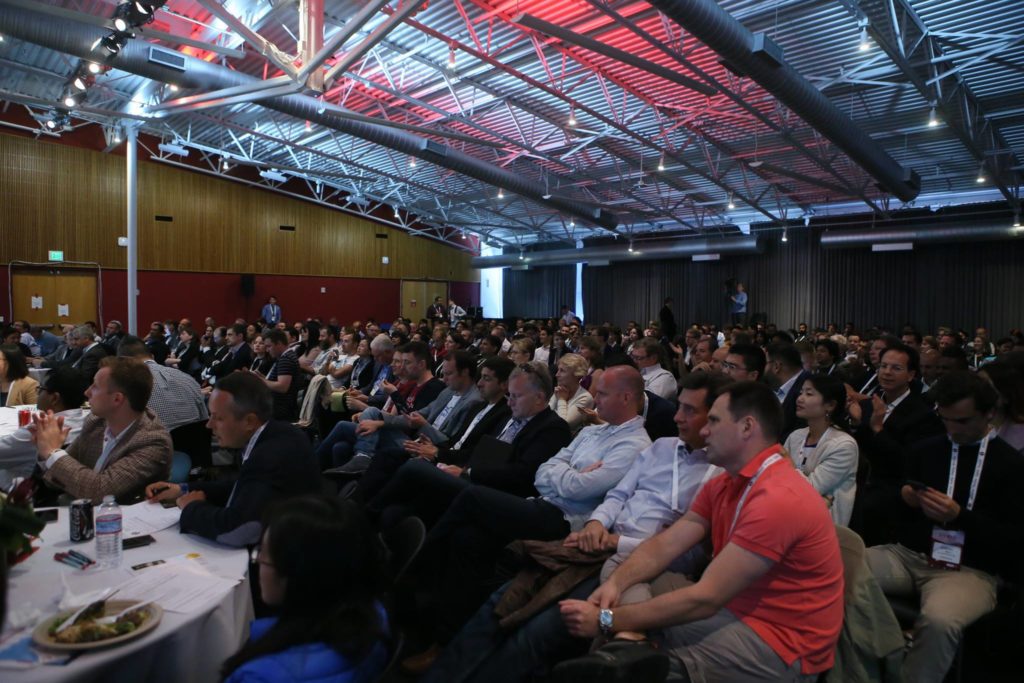
Facebook photo SVOD
But in general, SVOD-2016 was quite different than the previous ones. This year, perhaps not without the influence of personal tastes of the organizers, the percentage of startups from Ukraine increased at the conference, and startups from South Africa also appeared:


The beginning of the SVOD-2016 conference coincided with a press release from the Russian company ELVIS-NeoTek about the transfer of the 28-nanometer chip for video analytics ELISE to production. At the same time, the first to speak at SVOD (immediately after the greeting from the conference organizers) was one of the founders of ELVIS, venture capitalist Alexander Galitsky (in the photo on the right), who at one time began in the Soviet NGO ELAS as an electronics developer for space (continuity: ELAS - ELVIS - ELVEES - ELISE).

I entered the conference right during Galician speech and at the end asked him about the ELVIS press release, see c 24:55:
I note that ELISE is not a niche chip for a military man and is not an attempt to catch up with something by copying. This is a specific proposal developed in Russia technology (in cooperation with groups in California, Oregon, Shanghai and the UK), which is not just not ashamed to show on the world market, but which can become the basis for innovation in computer vision:

And here is another example of Russian continuity with SVOD, also from the world of microelectronics, Alex Tesler, president of a small company IP Cores in Palo Alto, California. IP Cores develops hardware blocks (for example, for cryptography) and licenses these blocks to larger electronic companies, which insert these blocks into their systems on a chip and bake at the chip factory:


“And what is the Russian continuity here?” - you ask. And with that: on the IP Cores website, I discovered that Alex was previously director of hardware engineering at Guzik Technical Enterprises , an immigrant company from Odessa Naum Guzik, who was the most famous Russian startup Silicon Valley of the 1980s:

Soviet engineer Guzik arrived in America in the 1970s. At first, he worked for five years in foreign companies, and then made his company, which managed at some point (I don’t know how now) to become the leader of a niche of a certain class of devices for testing hard drives:
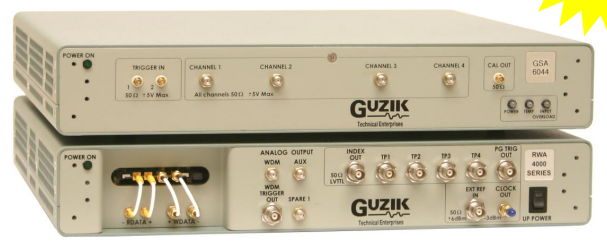
In the early 1990s, Nahum Guzik shook a whole generation of Russian immigrants in Silicon Valley so much that he even wrote about Pasquilan novels about him .
The topic of microelectronics also arose when I spoke on a SVOD with a cute girl named Lucy Emerson . When I asked what this girl was doing, she said that her mission was the development of Bahrain, the kingdom in the Persian Gulf. “But you don’t look like a girl from Bahrain,” I wondered. “Oh, I'm an American, I just work for the government of Bahrain,” Lucy replied.

"It is clear," I said, "probably Bahrain wants from the oil country to grow into technology, as Saudi Arabia does." "Exactly," answered Lucy. I gave an example for Lucy, how Saudi Arabia invests in education in the field of microelectronics. Here are a couple of pages of a textbook from Saudi Arabia about the algorithms that are used for the software that is intended for the physical side of chip design. In the development of microcircuits, there is, roughly speaking, logic (a graph of logical elements) and physics (as it is all located on a chip). You see what they do at the Saudi Petroleum Institute:
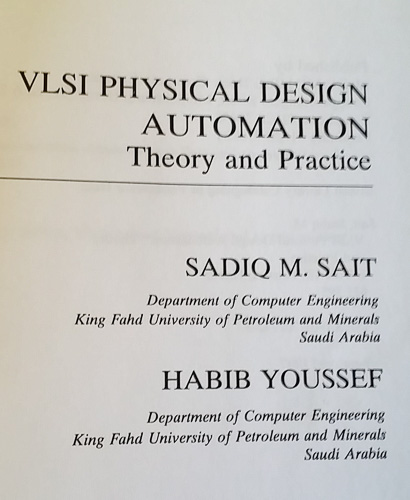
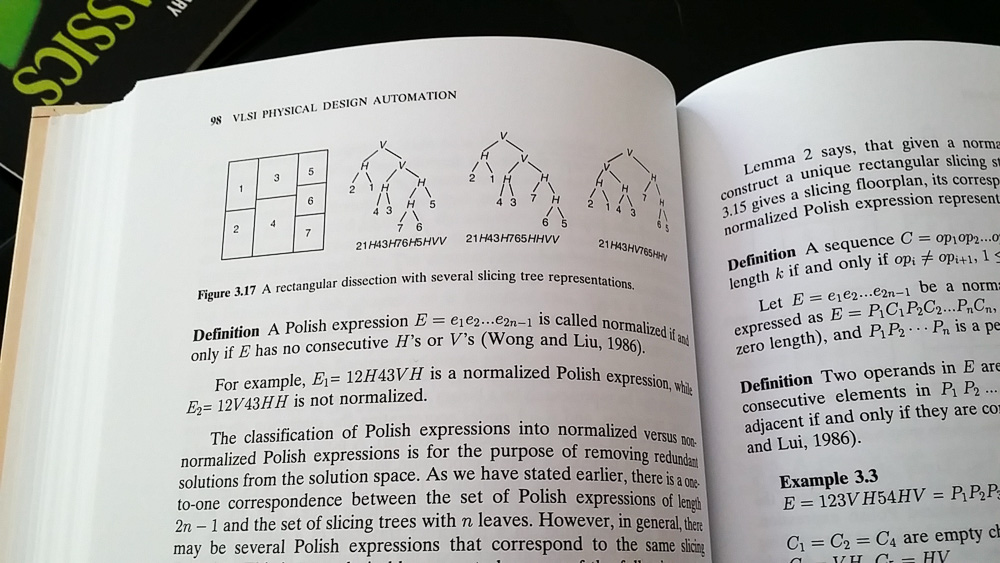
And here is an example of the application of such algorithms to practice: in the photo below I sit and study the physical aspect of chip design at the University of California Santa Cruz Silicon Valley Extension . I know the logical aspect well (I get paid a salary for verifying the logic of the blocks inside the microprocessor), but the physical aspect is not very good, so I can bring up this knowledge, I go to such educational courses with labs:

In addition to discussing with Lucy Saudis, I told her about the educational initiatives of our company, Imagination Technologies, in particular, about MIPSfpga - a package that contains the processor core in the source code on Verilog, which can be changed, add new instructions, build multiprocessor systems, change software and hardware etc. The task that Lucy is trying to solve in Bahrain is similar to the problems that the Russians are solving - they also want to become high-tech from an oil country.
As in previous years, SVOD had many startups on the subject of the web, mobile applications, online marketing and financial services. But this year, the theme of the Internet of Things (Internet of Things - IoT) has become the main growing trend. IoT turned out to be so fashionable that it was even singled out as a separate issue at an informal Ukrainian meeting after SVOD :
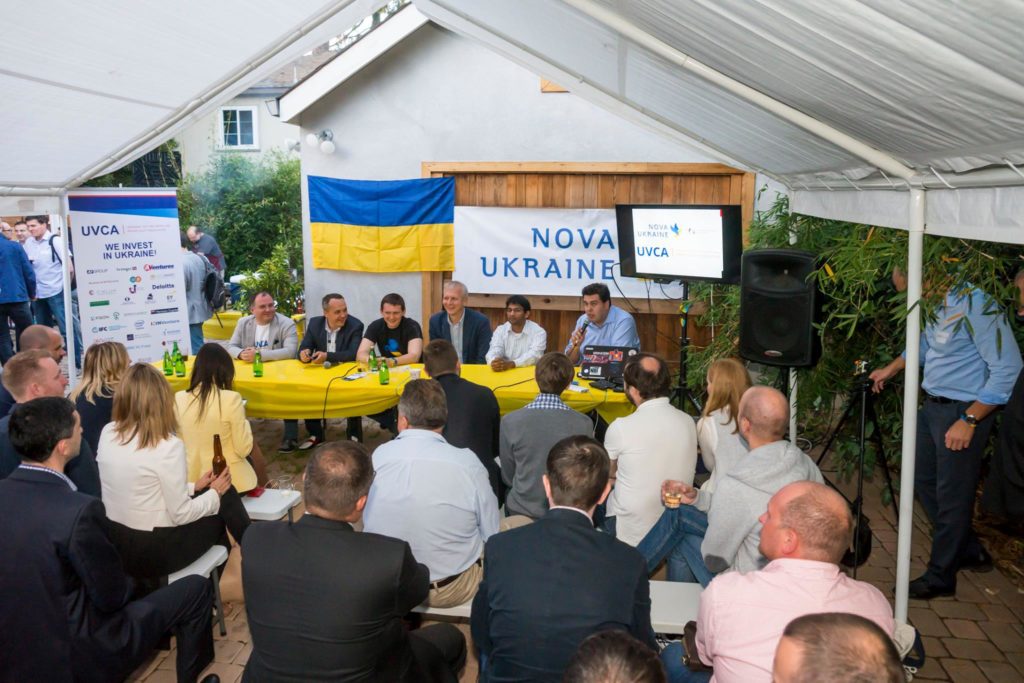
Photo from Facebook Nova Ukraina
Why did IoT become unexpectedly important for Ukraine? If you analyze the history of the Russian and Ukrainian high-tech over the past ten years, you can see that:
1. High-tech companies in Ukraine are dominated by large outsourcing companies that sell the same services for writing business software and creating websites. Although there are software developers for embedded systems among outsourcers, in general, the Ukrainian ecosystem looks too monotonous, which creates an additional risk if global demand for these services falls. Expansion in IoT is one of the options for diversification, creating diversity, more interesting work, the possibility of the emergence of small companies that focus on products rather than on outsourcing services.
2. Development of specialized microcircuits (Application-Specific Integrated Circuits - ASIC), such as in ELVIS-NeoTec (lower level than IoT), Ukraine does not shine at all in the coming years. Unlike Russia. In Russia, the government even in stunted times fed microelectronics with orders from the military and space; Then RUSNANO began to invest in microelectronics sums of the order of tens of millions of dollars for the project, and Russian universities prepared a new generation of Russian engineers who began working in companies such as ELVIS-NeoTech , Baikal Electronics and a dozen of similar design centers, cooperating with Western manufacturers of development automation tools microchips
There is practically no such thing in Ukraine. Of course, in Ukraine there are exceptions confirming the rule, for example, the branch of the Belgian manufacturer of automotive chips Melexis . In addition, the Kiev National University. Shevchenko, Kiev Polytechnic Institute and some other universities are now updating their programs by adding material to the courses on Verilog and VHDL hardware description languages, FPGA / FPGA chips (matrices of logical elements with redefinable functions, convenient for prototyping systems on a chip), architecture and microarchitecture of embedded processors, etc. Nevertheless, even under the optimal scenario, it will take several years before teams in the development of specialized microcircuits of the Russian level appear in Ukraine.
The direct cooperation of the Ukrainian ecosystem with Western companies in the development of microcircuits is doubtful, because Western companies do not like to build something without reserve; there is this reserve in Russia, but it is practically absent in Ukraine. In the parallel Universe, Ukrainian microelectronics could enhance cooperation with Russian companies, but in our Universe of 2016, such a scenario may be unrealistic for political reasons.
3. The Internet of Things includes the creation of networks of disparate devices based on ready-made microchips, using information exchange protocols that are gradually settling down before our eyes. Ukrainian developers have all the opportunities not only to fit into this area, but also to succeed in it at the global level. This requires the skills of accurate system programming, the ability to design printed circuit boards (not chips), knowledge of sensors and protocols, ingenuity and a good understanding of applications. All this is in Ukraine - for it is the age-old engineering traditions, rather than Maidans and low wages, are, from my point of view, the main asset of Ukrainian developers.
On this occasion, I broke away from SVOD and went along with a Ukrainian businessman Alexander Romanishin to another conference, for developers of the “Internet of things”. This conference was called the Internet of Things Developers Conference - IoT DevCon and was very close, at the Santa Clara Exhibition Center, 10 minutes away.

First of all, I brought Alexander to the booth of our company Imagination Technologies, where I showed the MIPS Creator Ci40 Internet of Things board , which contains a system on a chip based on a dual-core MIPS interAptiv cluster with hardware multithreading support with two threads / threads on each of the two cores (such an organization The processor helps to balance performance and power consumption, I can explain in the comments if anyone is interested in why).
I note that Google chose the MIPS Creator Ci40 board as one of the standard boards for the new Brillo operating system for the Internet of things .
Alexander Romanishin particularly liked the fact that marketing director David Harold showed him the use of this board for prototyping agro-applications. Ukrainian developers could, if they wish, develop and market on the world market a myriad of various “smart” devices for agriculture, including for example devices for Precision agriculture .

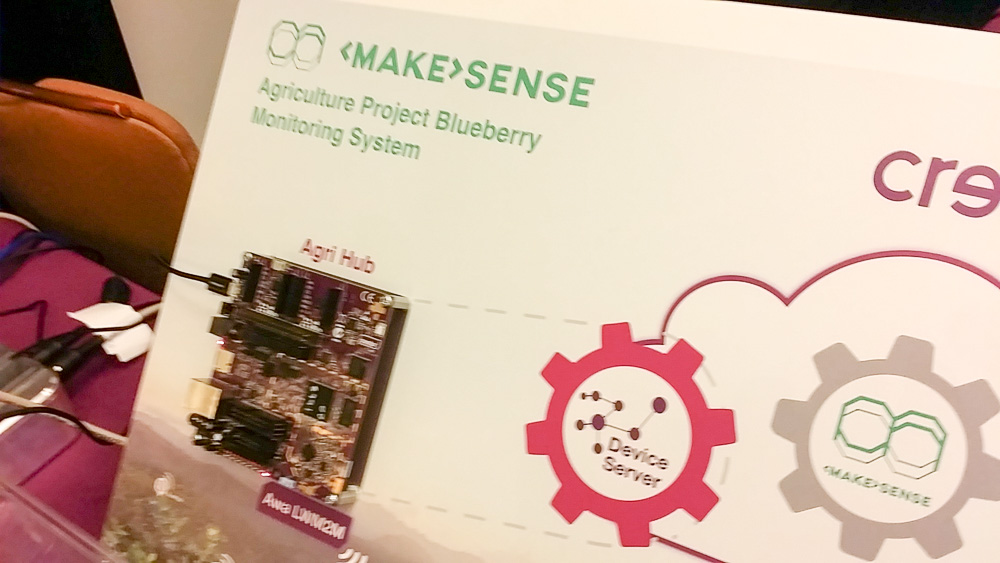
Next, Alexander and I walked through the stands of three dozen other companies at IoT DevCon. If desired, Ukrainian developers could not only use the products of these companies, but also compete with most of them (the types of companies with which Ukrainian developers could, in principle, compete in the global market in the coming years, I marked with asterisks):
Here is an example of a company at the exhibition - developers optimized for IoT virtual machines for Java, with a competitive advantage in the form of optimized garbage collection. This solution will not work in hard real-time (in particular, due to the fact that the garbage collector can go on at any time), but it can work in soft real-time (a less demanding level of prioritizing readiness):
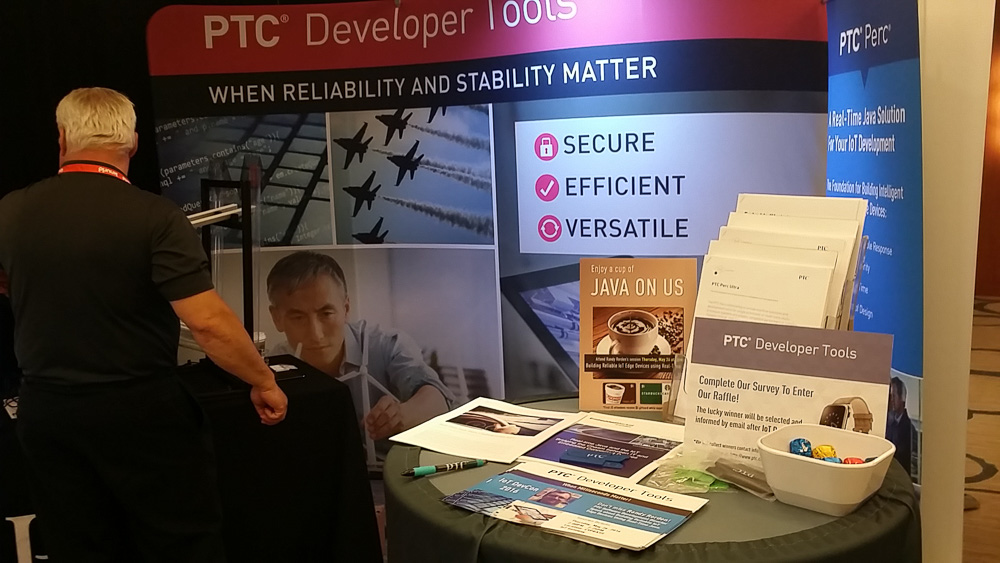
At this small exhibition, Alexander and I noticed how important the issue of security is for IoT. Why is this even necessary for miniature devices, most of which are quite simple? The fact is that when you have hundreds of devices connected to a wireless network in your home, it will be very unpleasant for you if any hacker throws one hundred first device, or provokes a hacked version of the operating system to be loaded into one of the existing devices, and then gets access to your love letters and other confidential information such as bank accounts.
One way to solve this problem is to run multiple OSes on a single processor inside virtual machines under the control of the hypervisor. For example, Linux will work in one virtual machine, and a specialized operating system with an application that serves Internet payments will work in another. Then, even with Linux being hacked, the attacker will not be able to access credit cards, since he will also have to hack the hypervisor and the second operating system, which is much more difficult (the hypervisors are small and well verified).
An example of an existing microcontroller with hardware virtualization support for such a solution is the Microchip PIC32MZ EF with the MIPS M5150 core :

There were several security startups on SVOD. That is not surprising because of the local Ukrainian activist Nik Bilogorsky , who, besides the Ukrainian activism, is also a security specialist .
And in particular, Nick led a startup from Riga Notakey , with the founders of which I spoke with great interest on the Ukrainian party. The key contract of my youth was connected with Riga when I was 20 years old (it was interesting + there were very nice cafes in 1991 + I went to the states for money from this contract). It will be necessary to go to Riga somehow, to see what happened to the old city, the cafe and the hairdresser who cut me in 1991 at the station :-)
One of the founders of Notakey, Janis Graubins:

Nick Bilogorsky:
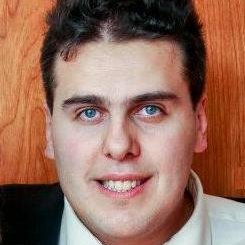
When I came to the Ukrainian party after the SVOD, I found that I knew the owner of the house in which it was held. Moreover, I know him for 32 years and even rented an apartment with him in Moscow for some time, but at the same time I have not communicated with him since the 20th century! This is my school, college and already local, Californian friend Orest Baidan , who, for those 16? (or 18?) years that we haven’t seen him, made a career in security , got married, made two children, made a collection of bamboo, and now every two weeks he organizes Ukrainian parties attended by top Ukrainian venture capitalists, the Ukrainian consul economic development in San Francisco, Russian opposition parliamentarians, security experts, a lot of girls, etc.
At the same time, I must note that before creating the de facto informal club of the Ukrainian community in California, Orest made a prototype of this in Russia: when we lived in the late 1980s in the dormitory number 8 of the Moscow Physical-Technical Institute in the city of Dolgoprudny, Orest brought several sofas into the passage between the two sections of the dormitory building, closed the doors to the corridors and thus created a club room for Ukrainian (and not only) MIPT students. (Then Orestes went to the USA and studied at two more American universities)
A parallel can be drawn between Orest and the newly appointed new US ambassador to Ukraine, Maria Yovanovitch, who also studied in Russia. It is people with experience of living in Ukraine, Russia and the United States who will help to create harmony between the three countries, necessary for technological and economic integration.
So on the party noticed:
The Ukrainian economic development consul in San Francisco is wearing a blue tie:
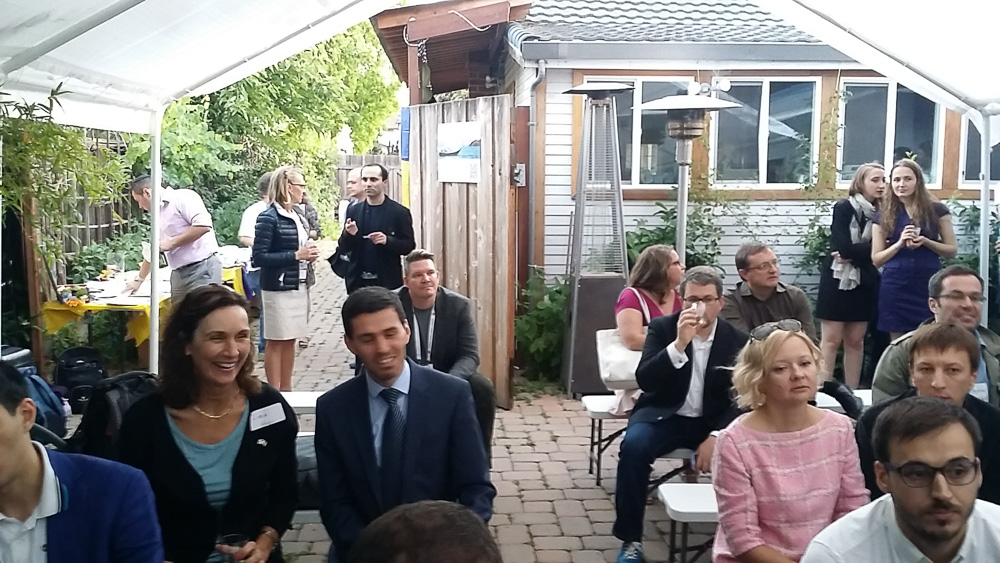
Top Ukrainian and Russian VC Alexander Galitsky - to the right of the red-haired girl:

The Russian parliamentarian Ilya Ponomarev, who was previously engaged in business development for Skolkov , and his assistant, Anastasia Popova, who greeted me at the party with a greeting “are we going to kiss?” (She is a very friendly girl to me, especially after offered to teach her to program in C, so that she could stop doing politics):
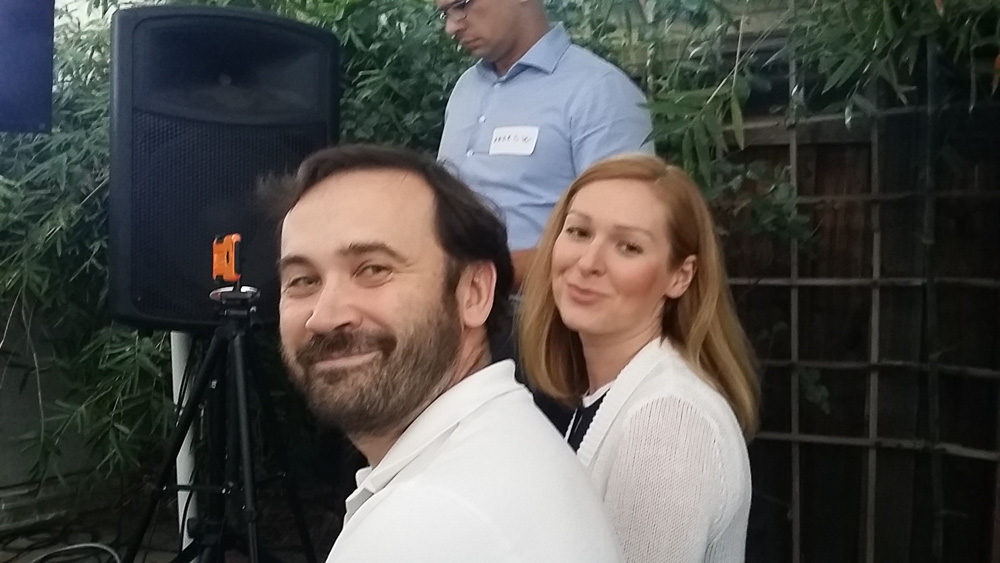
Two Ukrainians living far from their homeland - Artem Peshevets from Germany (deals with investments in private equity and came to study what venture financing is) and Fedor Datnov from the Los Angeles area, engaged in advertising consulting:
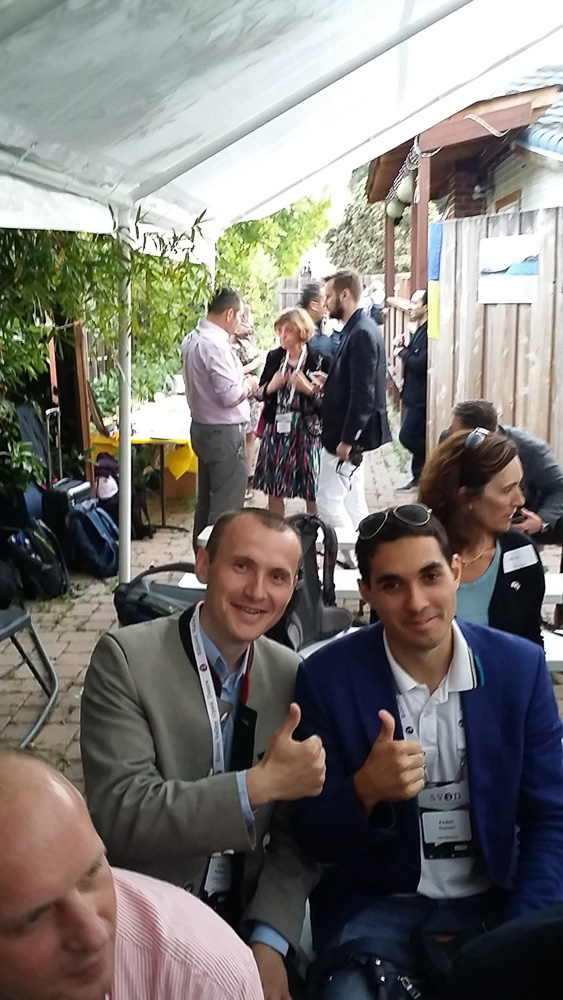
When everyone gathered, the discussion began Ukrainian VC:
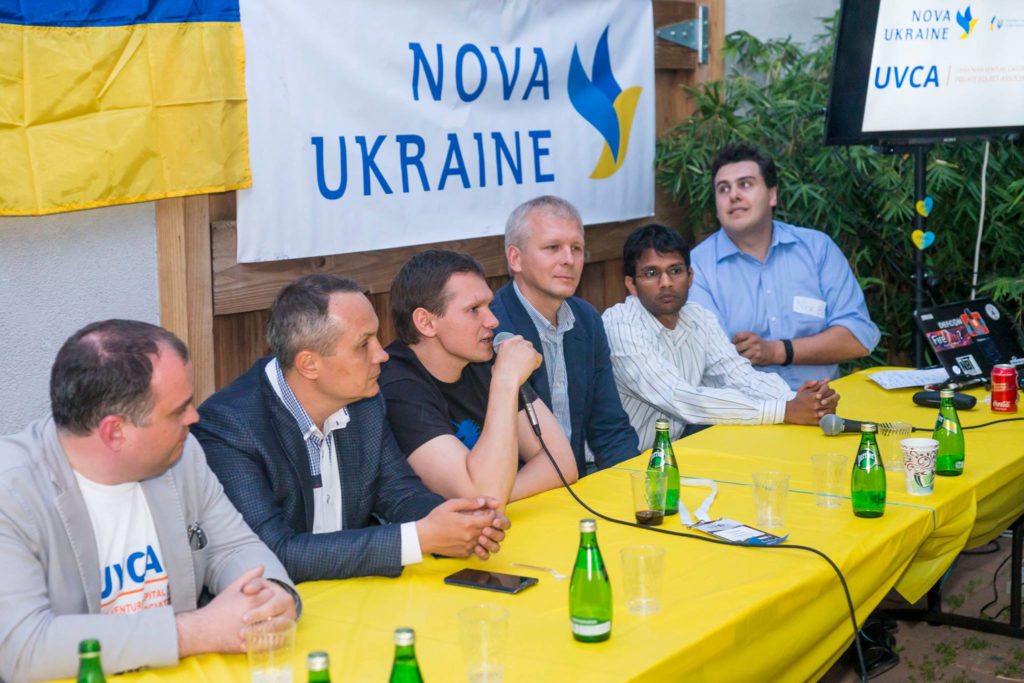
Photo from Facebook Nova Ukraina
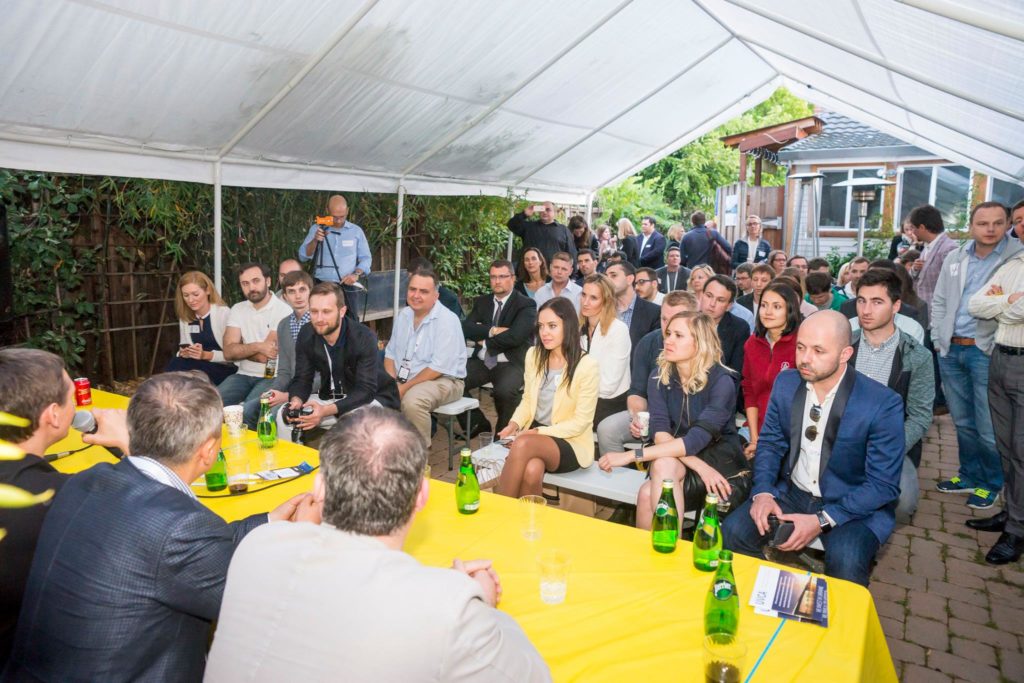
Photo from Facebook Nova Ukraina
There was nothing shocking in the discussion: low wages in Ukraine, high abilities, now IoT has come. The new information for me was that Ukrainian venture capitalists seem to have a low opinion of the Ukrainian government, leading VC Andrei Kolodyuk even suggested replacing the Ukrainian government with artificial intelligence:
One of the panellists was a representative of the Samsung Venture Division. When questions and answers went, I got up and said:
A Samsung representative nodded with a smile and I continued:
Here Nick Bilogorsky demanded that I formulate a question in 10 seconds, and not to spread by promontory on the tree, because behind were many thirsty with questions.
Here Nick and other participants began to say that the budget of Samsung’s educational programs in Ukraine is separated from the venture department, so I’m not addressing the address at all.
Well, I fell silent, after which the next questioner asked a comrade from Samsung how he relates to the brain drain from Ukraine (Brain Drain). This question was probably more addressed, because a comrade from Samsung responded to this in detail.
When I discussed the whole episode with a friend from Russia the next day, he said to me: “Listen, but this is obvious! You de facto offered a Samsung representative that Samsung was carrying 1000 times less money to Ukraine, while predicting a greater positive effect for both Samsung and the number of startups created. Of course, this is perceived by party members as vile trolling by party members, since they would like Samsung to carry more money from South Korea to Ukraine, and not less . ”


: - , 1400 - :

, -- . , , . „ ?! , ?“
— :

- , . :
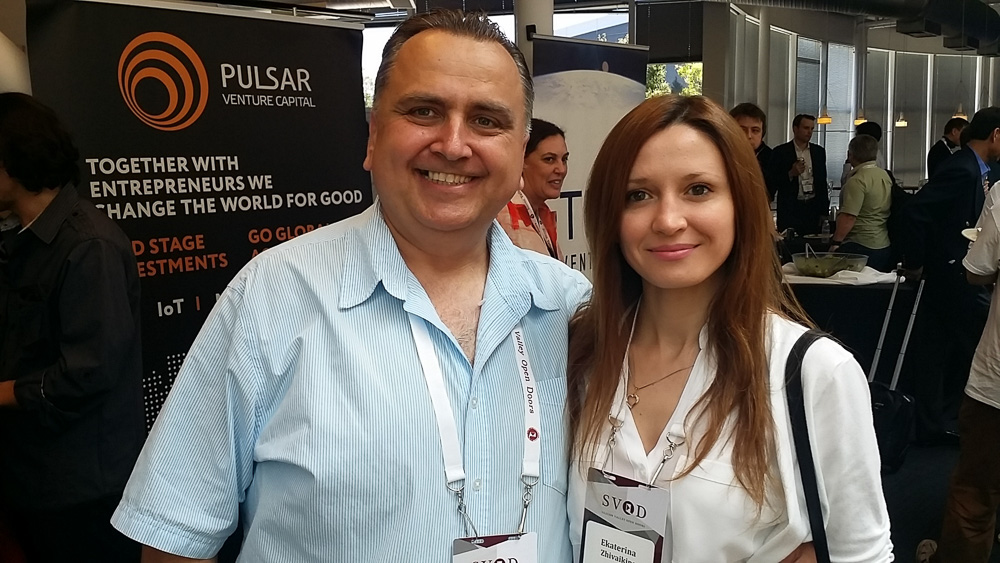
- . :
, , „int v1, v2, v3“, ( „int number_of_correct_reference_interval_predictions“). / , , - . , - , .
, - , . The points:
, ( GUI), ( ). , .
:
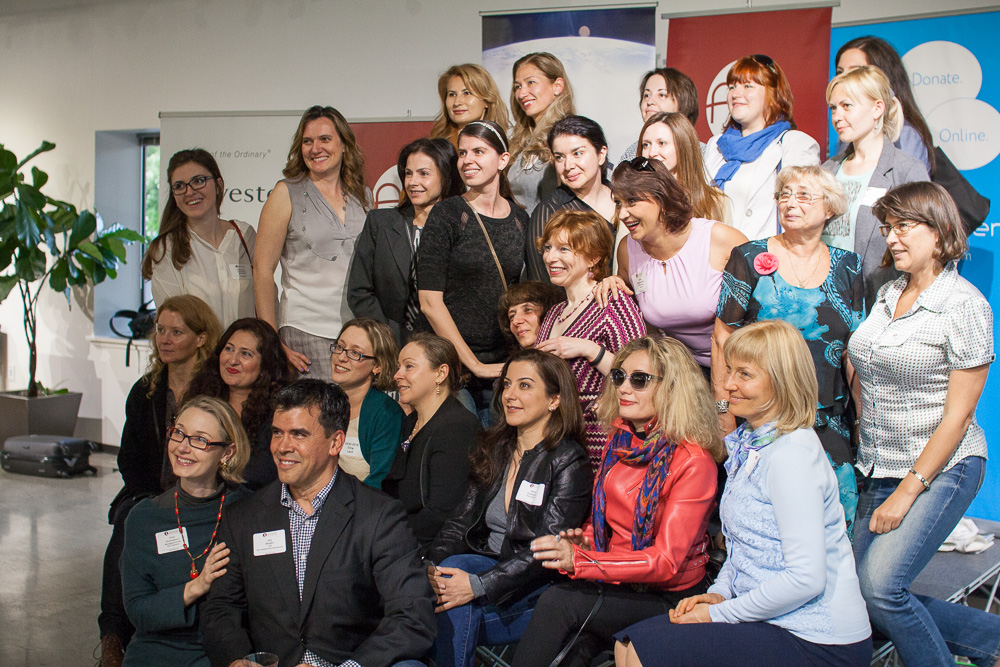
The Silicon Valley Open Doors (SVOD) annual startup and investment conference at the Computer History Museum in Mountain View, California, emerged 10 years ago as a way to connect the international Russian (well, let's use the term Russian-speaking) community with Silicon Valley venture capitalists and their associated infrastructure — corporate lawyers, marketing consultants, managers from companies like Google and HP, as well as business instructors from Stanford. The main organizer of the SVODs at that time was the American Business Association of Russian-speaking professionals or the American Business Association of the Russian-Speaking Professionals - AmBAR . In May, Ambarovtsi, in cooperation with RUSNANO, organized a visit by a delegation of the heads of the leading US venture capital funds to Moscow, and, for decoration, they put the head of the delegation of California Governor Arnold Schwarzenegger. At the same time, someone dismissed a rumor among Moscow liberal journalists that Michael McFaul allegedly organized all this, although in real life venture capitalists practically did not overlap with gosdepovskimi professors.
What did the last SVOD of 2016 look like?
')
Since SVOD-2016 took place within walking distance of Google, and the first batch was in Tesla's office, the matter did not go without any funny robot machines:
There were quite a lot of people at SVOD-2016, out of the blue more than a thousand:

Facebook photo SVOD
But in general, SVOD-2016 was quite different than the previous ones. This year, perhaps not without the influence of personal tastes of the organizers, the percentage of startups from Ukraine increased at the conference, and startups from South Africa also appeared:


1. Russia and microelectronics
The beginning of the SVOD-2016 conference coincided with a press release from the Russian company ELVIS-NeoTek about the transfer of the 28-nanometer chip for video analytics ELISE to production. At the same time, the first to speak at SVOD (immediately after the greeting from the conference organizers) was one of the founders of ELVIS, venture capitalist Alexander Galitsky (in the photo on the right), who at one time began in the Soviet NGO ELAS as an electronics developer for space (continuity: ELAS - ELVIS - ELVEES - ELISE).

I entered the conference right during Galician speech and at the end asked him about the ELVIS press release, see c 24:55:
I note that ELISE is not a niche chip for a military man and is not an attempt to catch up with something by copying. This is a specific proposal developed in Russia technology (in cooperation with groups in California, Oregon, Shanghai and the UK), which is not just not ashamed to show on the world market, but which can become the basis for innovation in computer vision:

And here is another example of Russian continuity with SVOD, also from the world of microelectronics, Alex Tesler, president of a small company IP Cores in Palo Alto, California. IP Cores develops hardware blocks (for example, for cryptography) and licenses these blocks to larger electronic companies, which insert these blocks into their systems on a chip and bake at the chip factory:


“And what is the Russian continuity here?” - you ask. And with that: on the IP Cores website, I discovered that Alex was previously director of hardware engineering at Guzik Technical Enterprises , an immigrant company from Odessa Naum Guzik, who was the most famous Russian startup Silicon Valley of the 1980s:

Soviet engineer Guzik arrived in America in the 1970s. At first, he worked for five years in foreign companies, and then made his company, which managed at some point (I don’t know how now) to become the leader of a niche of a certain class of devices for testing hard drives:

In the early 1990s, Nahum Guzik shook a whole generation of Russian immigrants in Silicon Valley so much that he even wrote about Pasquilan novels about him .
2. And at the same time Bahrain
The topic of microelectronics also arose when I spoke on a SVOD with a cute girl named Lucy Emerson . When I asked what this girl was doing, she said that her mission was the development of Bahrain, the kingdom in the Persian Gulf. “But you don’t look like a girl from Bahrain,” I wondered. “Oh, I'm an American, I just work for the government of Bahrain,” Lucy replied.

"It is clear," I said, "probably Bahrain wants from the oil country to grow into technology, as Saudi Arabia does." "Exactly," answered Lucy. I gave an example for Lucy, how Saudi Arabia invests in education in the field of microelectronics. Here are a couple of pages of a textbook from Saudi Arabia about the algorithms that are used for the software that is intended for the physical side of chip design. In the development of microcircuits, there is, roughly speaking, logic (a graph of logical elements) and physics (as it is all located on a chip). You see what they do at the Saudi Petroleum Institute:


And here is an example of the application of such algorithms to practice: in the photo below I sit and study the physical aspect of chip design at the University of California Santa Cruz Silicon Valley Extension . I know the logical aspect well (I get paid a salary for verifying the logic of the blocks inside the microprocessor), but the physical aspect is not very good, so I can bring up this knowledge, I go to such educational courses with labs:

In addition to discussing with Lucy Saudis, I told her about the educational initiatives of our company, Imagination Technologies, in particular, about MIPSfpga - a package that contains the processor core in the source code on Verilog, which can be changed, add new instructions, build multiprocessor systems, change software and hardware etc. The task that Lucy is trying to solve in Bahrain is similar to the problems that the Russians are solving - they also want to become high-tech from an oil country.
3. Ukraine and the Internet of things. And at the same time Latvia.
As in previous years, SVOD had many startups on the subject of the web, mobile applications, online marketing and financial services. But this year, the theme of the Internet of Things (Internet of Things - IoT) has become the main growing trend. IoT turned out to be so fashionable that it was even singled out as a separate issue at an informal Ukrainian meeting after SVOD :

Photo from Facebook Nova Ukraina
Why did IoT become unexpectedly important for Ukraine? If you analyze the history of the Russian and Ukrainian high-tech over the past ten years, you can see that:
1. High-tech companies in Ukraine are dominated by large outsourcing companies that sell the same services for writing business software and creating websites. Although there are software developers for embedded systems among outsourcers, in general, the Ukrainian ecosystem looks too monotonous, which creates an additional risk if global demand for these services falls. Expansion in IoT is one of the options for diversification, creating diversity, more interesting work, the possibility of the emergence of small companies that focus on products rather than on outsourcing services.
2. Development of specialized microcircuits (Application-Specific Integrated Circuits - ASIC), such as in ELVIS-NeoTec (lower level than IoT), Ukraine does not shine at all in the coming years. Unlike Russia. In Russia, the government even in stunted times fed microelectronics with orders from the military and space; Then RUSNANO began to invest in microelectronics sums of the order of tens of millions of dollars for the project, and Russian universities prepared a new generation of Russian engineers who began working in companies such as ELVIS-NeoTech , Baikal Electronics and a dozen of similar design centers, cooperating with Western manufacturers of development automation tools microchips
There is practically no such thing in Ukraine. Of course, in Ukraine there are exceptions confirming the rule, for example, the branch of the Belgian manufacturer of automotive chips Melexis . In addition, the Kiev National University. Shevchenko, Kiev Polytechnic Institute and some other universities are now updating their programs by adding material to the courses on Verilog and VHDL hardware description languages, FPGA / FPGA chips (matrices of logical elements with redefinable functions, convenient for prototyping systems on a chip), architecture and microarchitecture of embedded processors, etc. Nevertheless, even under the optimal scenario, it will take several years before teams in the development of specialized microcircuits of the Russian level appear in Ukraine.
The direct cooperation of the Ukrainian ecosystem with Western companies in the development of microcircuits is doubtful, because Western companies do not like to build something without reserve; there is this reserve in Russia, but it is practically absent in Ukraine. In the parallel Universe, Ukrainian microelectronics could enhance cooperation with Russian companies, but in our Universe of 2016, such a scenario may be unrealistic for political reasons.
3. The Internet of Things includes the creation of networks of disparate devices based on ready-made microchips, using information exchange protocols that are gradually settling down before our eyes. Ukrainian developers have all the opportunities not only to fit into this area, but also to succeed in it at the global level. This requires the skills of accurate system programming, the ability to design printed circuit boards (not chips), knowledge of sensors and protocols, ingenuity and a good understanding of applications. All this is in Ukraine - for it is the age-old engineering traditions, rather than Maidans and low wages, are, from my point of view, the main asset of Ukrainian developers.
On this occasion, I broke away from SVOD and went along with a Ukrainian businessman Alexander Romanishin to another conference, for developers of the “Internet of things”. This conference was called the Internet of Things Developers Conference - IoT DevCon and was very close, at the Santa Clara Exhibition Center, 10 minutes away.

First of all, I brought Alexander to the booth of our company Imagination Technologies, where I showed the MIPS Creator Ci40 Internet of Things board , which contains a system on a chip based on a dual-core MIPS interAptiv cluster with hardware multithreading support with two threads / threads on each of the two cores (such an organization The processor helps to balance performance and power consumption, I can explain in the comments if anyone is interested in why).
I note that Google chose the MIPS Creator Ci40 board as one of the standard boards for the new Brillo operating system for the Internet of things .
Alexander Romanishin particularly liked the fact that marketing director David Harold showed him the use of this board for prototyping agro-applications. Ukrainian developers could, if they wish, develop and market on the world market a myriad of various “smart” devices for agriculture, including for example devices for Precision agriculture .


Next, Alexander and I walked through the stands of three dozen other companies at IoT DevCon. If desired, Ukrainian developers could not only use the products of these companies, but also compete with most of them (the types of companies with which Ukrainian developers could, in principle, compete in the global market in the coming years, I marked with asterisks):
- Developers specialized for IoT embedded real-time operating systems *
- Developers optimized for IoT hypervisors to run multiple OSes on a single processor inside virtual machines *
- Developers of IoT-optimized virtual machines for Java, for example with an optimized garbage collection *
- Developers of middleware, messaging software and I / O libraries for IoT platforms *
- Software developers analyzing IoT * security networks
- IoT Device Prototyping Board Developers *
- Developers monitor network devices from IoT devices *
- Developers of microprocessor cores for on-chip systems for IoT - Imagination Technologies
- Microcontroller Manufacturers - Microchip Technology, STMicroelectronics and Renesas
- OpenSilicon Service for Custom-Made ASIC Chip for IoT
Here is an example of a company at the exhibition - developers optimized for IoT virtual machines for Java, with a competitive advantage in the form of optimized garbage collection. This solution will not work in hard real-time (in particular, due to the fact that the garbage collector can go on at any time), but it can work in soft real-time (a less demanding level of prioritizing readiness):

At this small exhibition, Alexander and I noticed how important the issue of security is for IoT. Why is this even necessary for miniature devices, most of which are quite simple? The fact is that when you have hundreds of devices connected to a wireless network in your home, it will be very unpleasant for you if any hacker throws one hundred first device, or provokes a hacked version of the operating system to be loaded into one of the existing devices, and then gets access to your love letters and other confidential information such as bank accounts.
One way to solve this problem is to run multiple OSes on a single processor inside virtual machines under the control of the hypervisor. For example, Linux will work in one virtual machine, and a specialized operating system with an application that serves Internet payments will work in another. Then, even with Linux being hacked, the attacker will not be able to access credit cards, since he will also have to hack the hypervisor and the second operating system, which is much more difficult (the hypervisors are small and well verified).
An example of an existing microcontroller with hardware virtualization support for such a solution is the Microchip PIC32MZ EF with the MIPS M5150 core :

There were several security startups on SVOD. That is not surprising because of the local Ukrainian activist Nik Bilogorsky , who, besides the Ukrainian activism, is also a security specialist .
And in particular, Nick led a startup from Riga Notakey , with the founders of which I spoke with great interest on the Ukrainian party. The key contract of my youth was connected with Riga when I was 20 years old (it was interesting + there were very nice cafes in 1991 + I went to the states for money from this contract). It will be necessary to go to Riga somehow, to see what happened to the old city, the cafe and the hairdresser who cut me in 1991 at the station :-)
One of the founders of Notakey, Janis Graubins:

Nick Bilogorsky:

4. More about the Ukrainian party after SVOD
When I came to the Ukrainian party after the SVOD, I found that I knew the owner of the house in which it was held. Moreover, I know him for 32 years and even rented an apartment with him in Moscow for some time, but at the same time I have not communicated with him since the 20th century! This is my school, college and already local, Californian friend Orest Baidan , who, for those 16? (or 18?) years that we haven’t seen him, made a career in security , got married, made two children, made a collection of bamboo, and now every two weeks he organizes Ukrainian parties attended by top Ukrainian venture capitalists, the Ukrainian consul economic development in San Francisco, Russian opposition parliamentarians, security experts, a lot of girls, etc.
At the same time, I must note that before creating the de facto informal club of the Ukrainian community in California, Orest made a prototype of this in Russia: when we lived in the late 1980s in the dormitory number 8 of the Moscow Physical-Technical Institute in the city of Dolgoprudny, Orest brought several sofas into the passage between the two sections of the dormitory building, closed the doors to the corridors and thus created a club room for Ukrainian (and not only) MIPT students. (Then Orestes went to the USA and studied at two more American universities)
A parallel can be drawn between Orest and the newly appointed new US ambassador to Ukraine, Maria Yovanovitch, who also studied in Russia. It is people with experience of living in Ukraine, Russia and the United States who will help to create harmony between the three countries, necessary for technological and economic integration.
So on the party noticed:
The Ukrainian economic development consul in San Francisco is wearing a blue tie:

Top Ukrainian and Russian VC Alexander Galitsky - to the right of the red-haired girl:

The Russian parliamentarian Ilya Ponomarev, who was previously engaged in business development for Skolkov , and his assistant, Anastasia Popova, who greeted me at the party with a greeting “are we going to kiss?” (She is a very friendly girl to me, especially after offered to teach her to program in C, so that she could stop doing politics):

Two Ukrainians living far from their homeland - Artem Peshevets from Germany (deals with investments in private equity and came to study what venture financing is) and Fedor Datnov from the Los Angeles area, engaged in advertising consulting:

When everyone gathered, the discussion began Ukrainian VC:

Photo from Facebook Nova Ukraina

Photo from Facebook Nova Ukraina
There was nothing shocking in the discussion: low wages in Ukraine, high abilities, now IoT has come. The new information for me was that Ukrainian venture capitalists seem to have a low opinion of the Ukrainian government, leading VC Andrei Kolodyuk even suggested replacing the Ukrainian government with artificial intelligence:
One of the panellists was a representative of the Samsung Venture Division. When questions and answers went, I got up and said:
Yuri Panchul: “I work at Imagination Technologies and Samsung is our client in the field of Internet of Things. In particular, Samsung licensed the MIPS microAptiv UC and UP kernels for the Samsung Artik 1 IoT platform. ”
A Samsung representative nodded with a smile and I continued:
Yuri Panchul: “At the same time, I traveled to Ukraine in 2012 with presentations at KNU and KPI as a representative of MIPS / Imagination Technologies and our partner Microchip Technology. So ... "
Here Nick Bilogorsky demanded that I formulate a question in 10 seconds, and not to spread by promontory on the tree, because behind were many thirsty with questions.
Yuri Panchul: “Well, the question. Why should Samsung not distribute Artik 1 cards for $ 100 thousand dollars to Ukrainian universities? This may have a greater effect on creating Ukrainian startups in the field of the Internet of Things than the $ 100 million venture capital fund, since over the next years more students will learn the appropriate technologies and more students will experiment with the boards.
Here Nick and other participants began to say that the budget of Samsung’s educational programs in Ukraine is separated from the venture department, so I’m not addressing the address at all.
Well, I fell silent, after which the next questioner asked a comrade from Samsung how he relates to the brain drain from Ukraine (Brain Drain). This question was probably more addressed, because a comrade from Samsung responded to this in detail.
When I discussed the whole episode with a friend from Russia the next day, he said to me: “Listen, but this is obvious! You de facto offered a Samsung representative that Samsung was carrying 1000 times less money to Ukraine, while predicting a greater positive effect for both Samsung and the number of startups created. Of course, this is perceived by party members as vile trolling by party members, since they would like Samsung to carry more money from South Korea to Ukraine, and not less . ”


5. Techno-feminists and Hindu code. But at the same time Israel.
: - , 1400 - :

, -- . , , . „ ?! , ?“
— :

- , . :

- . :
- , . , . , , .
- , . $100K/, , , $200K/.
- , . , , , , - CEO. 7 .
, , „int v1, v2, v3“, ( „int number_of_correct_reference_interval_predictions“). / , , - . , - , .
, - , . The points:
- — . (1 , — , — ). 15, , , . „ “, „ “. Everything. . , , , .
- — . , , 6 .
, , , , , . 5-7 , . , . ( , ). - , , -. , . — Synopsys ( , ) — , , -.
, ( GUI), ( ). , .
:

Source: https://habr.com/ru/post/302232/
All Articles